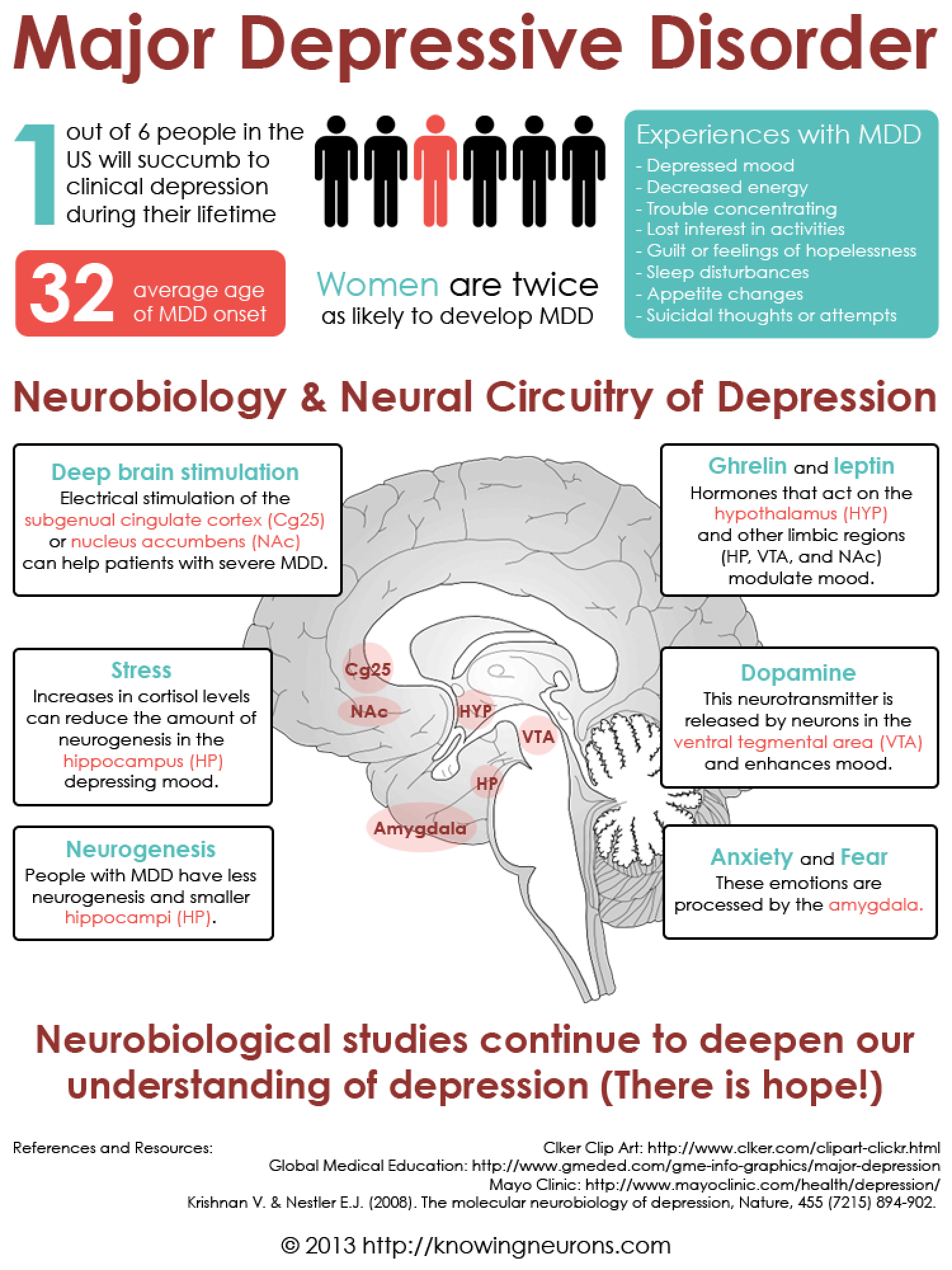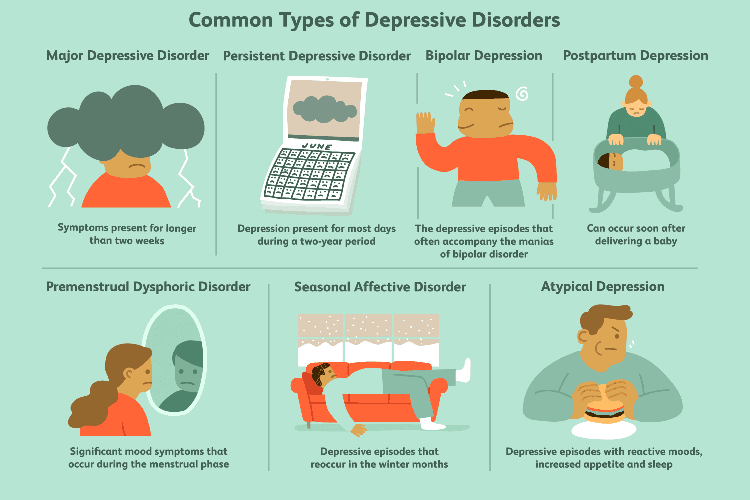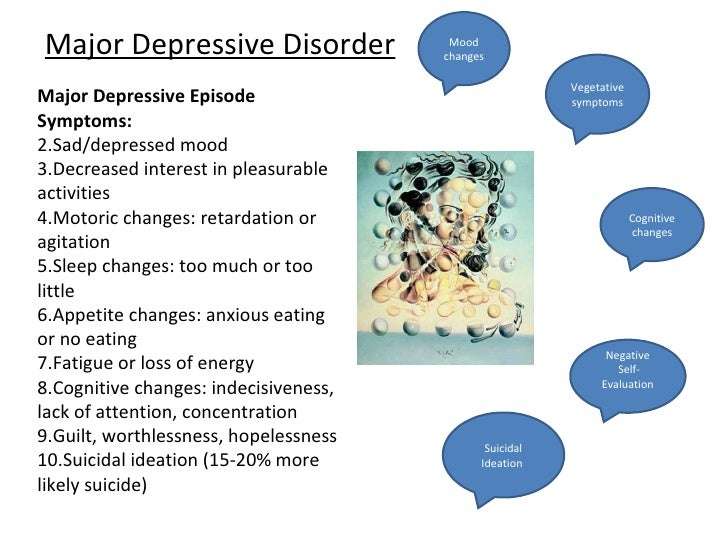Prevention Of Major Depression
Although there is no clear way of preventing depression, there are techniques which can help:
Antidepressants And Mood Switching
There is widespread concern that antidepressant treatment for bipolar depression risks switching into potentially dangerous agitation or mania, especially in BD-I . Such risk is more associated with the long-term BD course-pattern of depression followed by mania before a stable interval than the opposite . However, it is difficult to distinguish spontaneous from antidepressant-associated switching in BD, mean rates of which are similar . Though it is plausible to expect mood-stabilizing and antipsychotic drugs to prevent mood-switching with antidepressants, required randomized comparisons are lacking . Trials of antidepressants have found little difference in risk of new mania between antidepressants and placebo, with or without a mood-stabilizer included, although exposure times were short . However, one study found that switching in BD was 2.8-times greater within 9 months after adding an antidepressant, but not if a mood-stabilizer also was used , and switching risk was increased in the rare long-term trials with an antidepressant included in treatment .
Outlook For Major Depression
Most children who receive early and effective treatment for major depression will improve and may even go on to experience complete resolution of symptoms. Children with more severe episodes of depression and children who have depression as well as other disorders may continue to work with treatment providers for a longer period of time. Some children will have a recurrent type of depression that can come and go over the course of their lifetime. These children benefit from periodically re-engaging in treatment as symptoms arise.
Recommended Reading: I Think I May Be Depressed
How Is Depression Different From Sadness
What is the difference between depression and sadness? Given that the primary symptom associated with depression is sadness it can be hard to know how to make a distinction between the two psychological states.
But depression is more than just sadness, and not simply by a measure of degree. The difference doesnât lie in the extent to which a person feels down, but rather in a combination of factors relating to the duration of these negative feelings, other symptoms, bodily impact, and the effect upon the individualâs ability to function in daily life.
Sadness is a normal emotion that everyone will experience at some point in his or her life. Be it the loss of a job, the end of a relationship, or the death of a loved one, sadness is usually caused by a specific situation, person, or event. When it comes to depression, however, no such trigger is needed. A person suffering from depression feels sad or hopeless about everything. This person may have every reason in the world to be happy and yet they lose the ability to experience joy or pleasure.
With sadness, you might feel down in the dumps for a day or two, but youâre still able to enjoy simple things like your favorite TV show, food, or spending time with friends. This isnât the case when someone is dealing with depression. Even activities that they once enjoyed are no longer interesting or pleasurable.
What Are The Symptoms Of Mood Disorders

Depending on age and the type of mood disorder, a person may have different symptoms of depression. The following are the most common symptoms of a mood disorder:
-
Ongoing sad, anxious, or empty mood
-
Feeling hopeless or helpless
-
Feeling inadequate or worthless
-
Excessive guilt
-
Repeating thoughts of death or suicide, wishing to die, or attempting suicide
-
Loss of interest in usual activities or activities that were once enjoyed, including sex
-
Relationship problems
-
Trouble sleeping or sleeping too much
-
Changes in appetite and/or weight
-
Trouble concentrating
-
A decrease in the ability to make decisions
-
Frequent physical complaints that dont get better with treatment
-
Running away or threats of running away from home
-
Very sensitive to failure or rejection
-
Irritability, hostility, or aggression
In mood disorders, these feelings are more intense than what a person may normally feel from time to time. Its also of concern if these feelings continue over time, or interfere with one’s interest in family, friends, community, or work. Any person who expresses thoughts of suicide should get medical help right away.
The symptoms of mood disorders may look like other conditions or mental health problems. Always talk with a healthcare provider for a diagnosis.
Don’t Miss: Depression A Teen’s Guide To Survive And Thrive
Alcohol Substance Abuse And Depression
Alcoholism and other forms of drug dependence are also related to depression. Dual diagnosis – substance abuse and another psychiatric disorder, usually a mood disorder – is an increasingly serious psychiatric concern. Whether drug abuse causes depression, depression leads to drug abuse, or both have a common cause, a vicious spiral ensues when addicts use the drugs to relieve symptoms the drugs have caused. Cocaine and other stimulants act on neurotransmitters in the brains pleasure center, causing elation that is followed by depression as the effect subsides. Sometimes what appears to be major depression clears up after abstinence from alcohol or drugs. People with serious mood disorders also have twice the average rate of nicotine addiction, and many become depressed when they try to stop smoking.
What Triggers Major Depression
Some common triggers or causes of major depression include:
- Loss of a loved one through death, divorce, or separation
- Social isolation or feelings of being deprived
- Major life changes — moving, graduation, job change, retirement
- Personal conflicts in relationships, either with a significant other or a superior
- Physical, sexual, or emotional abuse
Don’t Miss: Is Spacing Out A Sign Of Depression
The Various Types Of Mood Disorders
Steven Gans, MD is board-certified in psychiatry and is an active supervisor, teacher, and mentor at Massachusetts General Hospital.
A mood disorder, also referred to as an affective disorder, is a condition that severely impacts mood and its related functions. Mood disorder is a broad term that’s used to include all the different types of depressive and bipolar disorders, both of which affect mood. If you have symptoms of a mood disorder, your moods may range from extremely low to extremely high or irritable .
Key Points About Mood Disorders
-
A mood disorder is a mental health class that health professionals use to broadly describe all types of depression and bipolar disorders.
-
The most common types of mood disorders are major depression, dysthymia , bipolar disorder, mood disorder due to a general medical condition, and substance-induced mood disorder.
-
There is no clear cause of mood disorders. Healthcare providers think they are a result of chemical imbalances in the brain. Some types of mood disorders seem to run in families, but no genes have yet been linked to them.
-
In general, nearly everyone with a mood disorder has ongoing feelings of sadness, and may feel helpless, hopeless, and irritable. Without treatment, symptoms can last for weeks, months, or years, and can impact quality of life.
-
Depression is most often treated with medicine, psychotherapy or cognitive behavioral therapy, family therapy, or a combination of medicine and therapy. In some cases, other therapies, such as electroconvulsive therapy and transcranial stimulation may be used.
Don’t Miss: How To Know If You Have Major Depressive Disorder
It’s Easy To Get The Care You Need
See a Premier Physician Network provider near you.
When you face the low feelings of depression, hope can seem distant. But the good news, says Beth Esposito, MS, LPCC-S, LSW, of Samaritan Behavioral Health: Depression is a treatable illness.
Depression treatment that works for one person, however, may not work for another. Thats because depression varies from one person to the next in severity and type. Finding the right treatment for you may take time and fine-tuning, Esposito says.
She offers the following comparisons of two common types of depression and their symptoms, diagnosis and treatment:
- Bipolar depression, which is characterized by alternating periods of depression and mania
- Unipolar depression, more commonly known as major depression, which has no manic periods
If you experience one episode of depression, you are at risk of recurring bouts.
What Is Major Or Clinical Depression
Most people feel sad or low at some point in their lives. But clinical depression is marked by a depressed mood most of the day, sometimes particularly in the morning, and a loss of interest in normal activities and relationships — symptoms that are present every day for at least 2 weeks. In addition, according to the DSM-5 — a manual used to diagnose mental health conditions — you may have other symptoms with major depression. Those symptoms might include:
- Fatigue or loss of energy almost every day
- Feelings of worthlessness or guilt almost every day
- Impaired concentration, indecisiveness
- Insomnia or hypersomnia almost every day
- Restlessness or feeling slowed down
- Recurring thoughts of death or suicide
- Significant weight loss or gain
Recommended Reading: Will I Be Depressed My Whole Life
Who Is At Risk For Major Depression
Major depression affects about 6.7% of the U.S. population over age 18, according to the National Institute of Mental Health. Overall, between 20% and 25% of adults may suffer an episode of major depression at some point during their lifetime.
Major depression also affects older adults, teens, and children, but frequently goes undiagnosed and untreated in these populations.
How Are Mood Disorders Treated

Treatment will depend on the specific illness and symptoms that are present. Usually, therapy involves a combination of medication and psychotherapy . Therapy sessions may be conducted by a psychologist, psychiatrist, or other health professional.
Medications to treat depression and/or bipolar disorders
Psychotherapy
Patients with depression and other mood disorders may benefit from various types of psychotherapy or counseling sessions. Types of therapy include:
- Cognitive-behavioral therapy
- Problem-solving therapy
Brain stimulation therapies
Brain stimulation therapies are thought to work by causing changes in the chemicals in the brain that are known to be associated with symptoms of depression and bipolar disorders. There are several types of brain stimulation therapies including:
Treatments for seasonal depression
Antidepressant medications, such as SSRIs and bupropion, and psychotherapy are used to treat seasonal affective disorder. In addition, patients may benefit from light therapy and vitamin D supplements.
- Light therapy – This technique has long been used to treat SAD. It is based on the idea of supplementing natural sunlight with bright artificial light during the fall and winter. Patients may use a light box that provides cool-white fluorescent light. Each morning, the person is exposed to the artificial light for about 20 to 60 minutes. The light is about 20 times more intense than regular indoor lighting.
Recommended Reading: How To Live A Happy Life With Depression
Lithium Treatment And Suicide
An association of reduced risk of suicides and attempts during long-term treatment with lithium in BD is supported consistently by most , but not all studies . At least 10 placebo-controlled, randomized trials not specifically designed with suicide risk as the primary outcome measure, but involving more than 110,000 person-years of risk, found five- to sixfold reductions in suicidal acts . Based on such studies, several expert reports recommend long-term lithium treatment to limit risk of suicidal behavior in BD patients .
What Are The Symptoms Of Common Mood Disorders
Symptoms depend on the type of mood disorder that is present.
Symptoms of major depression may include:
- Feeling sad most of the time or nearly every day
- Lack of energy or feeling sluggish
- Feeling worthless or hopeless
- Loss of appetite or overeating
- Gaining weight or losing weight
- Loss of interest in activities that formerly brought enjoyment
- Sleeping too much or not enough
- Frequent thoughts about death or suicide
- Difficulty concentrating or focusing
Symptoms of bipolar disorder may include both depression and mania. Symptoms of hypomanic or manic episodes include:
- Feeling extremely energized or elated
- Rapid speech or movement
- Risk-taking behavior, such as spending too much money or driving recklessly
- Unusual increase in activity or trying to do too many things at once
- Racing thoughts
- Feeling jumpy or on edge for no apparent reason
You May Like: How To Help Bipolar Depression
Psycom Explains The Different Types Of Depression From Major Depressive Disorder To Dysthymia Postpartum Depression Seasonal Affective Disorder And More
Article by:
Jump to:
Depression is more than just feeling sad. Everyone feels low, upset, or unmotivated from time to time, but depression is much more than simply being down in the dumps. Depressive disorder is a mood disorder that affects how a person thinks, feels and behaves. Signs and symptoms of depression can range from hopelessness and fatigue, to a loss of interest in life, physical pain, and even suicidal thoughts. The DSM-5 definition of depression states that should a person present with these symptoms for a period of two weeks, the individual is experiencing a depressive episode.
There are many different types of depression, some of which are caused by events in your life, and others by chemical changes in the brain. Depression can be thought of as an umbrella term for a variety of disorders, some of which are caused by certain life events or situations, and others by chemical changes in the brain. Whatâs more, while some of the symptoms associated with the various depressive disorders overlap, there are also some key differences.
With the term âdepressionâ encompassing so many types of depression, if you think you might be depressed, you may be asking yourself: what kind of depression do I have?
Suicide And Treatment With Antidepressants
Suicide cannot be treated but only prevented . Research on treatments aimed at suicide prevention, not surprisingly, is very limited because of clinical and ethical problems arising if an inactive or ineffective treatment, such as placebo, were compared to an experimental intervention, with death as a potential outcome. In addition, it is virtually impossible to know when a suicide has been prevented, whereas suicidal acts or surrogate measures can be counted. Rarity of suicide, even among psychiatric patients, encourages research reliance on more prevalent measures related to suicide, including suicidal ideation, threats, self-injurious acts, or emergency interventions. However, the typically distant relationship of such measures to suicide limits their value in testing for therapeutic effects on suicide itself. Relating treatments to suicidal risks is further complicated by uncertain long-term adherence to recommended treatments . Treatments for BD considered for possible suicide-prevention include antidepressants, anticonvulsants and lithium, antipsychotics, ECT, and psychosocial interventions .
Table 3 Treatments aimed at reducing suicidal risk in bipolar disorder patients
You May Like: What Happens To Your Body When You Are Depressed
Depression In Overall Morbidity
Of note, overall time in depressive phases of BD, and duration of depressive episodes are much greater than in mania or hypomania . Moreover, morbidity has been surprisingly high in BD despite supposedly effective treatment. Indeed, BD patients averaged 45% of time ill during long-term follow-up, and depression accounted for 72% of time-ill, and somewhat more with BD-II than BD-I .
Table 1 Depressive morbidity in clinically treated bipolar disorder subjects.
Signs And Symptoms Of Major Depression
Each child may experience symptoms of major depression differently. To be diagnosed with major depression, a child needs to show at least one of the following two symptoms for most days of the week, for most of the day, during the same two-week period:
-
Persistent feelings of sadness or irritability
-
Loss of interest or pleasure in all or almost all activities once enjoyed
In addition, several of the following symptoms must also be present:
-
Feeling hopeless or helpless
-
Frequent physical complaints, such as a headache, stomachache, or fatigue
-
Thoughts of wishing to be dead
-
Suicidal thoughts or attempts
Its crucial to remember that depression symptoms and suicidal thoughts and behaviors must be taken very seriously.
Read Also: I Ve Been Really Depressed Lately
Beyond Treatment: Things You Can Do
Here are other tips that may help you or a loved one during treatment for depression:
- Try to be active and exercise.
- Set realistic goals for yourself.
- Try to spend time with other people and confide in a trusted friend or relative.
- Try not to isolate yourself, and let others help you.
- Expect your mood to improve gradually, not immediately.
- Postpone important decisions, such as getting married or divorced, or changing jobs until you feel better. Discuss decisions with others who know you well and have a more objective view of your situation.
- Continue to educate yourself about depression.
Treatment For Major Depression

Early treatment is key to reducing distress, improving functioning, and preventing future depression episodes. Without treatment, your childs depression could persist for longer and become increasingly more severe, leading to significant impairment in school, at home, and with friends and family.
At Childrens Hospital of Philadelphia, a specialist will design an individualized treatment plan based on your childs symptoms and other personal factors. The treatment plan may include:
Also Check: Do Cell Phones Cause Depression
How Is Major Depressive Disorder Treated
MDD is often treated with medication and psychotherapy. Some lifestyle adjustments can also help ease certain symptoms.
People who have severe MDD or have thoughts of harming themselves may need to stay in a hospital during treatment. Some might also need to take part in an outpatient treatment program until symptoms improve.